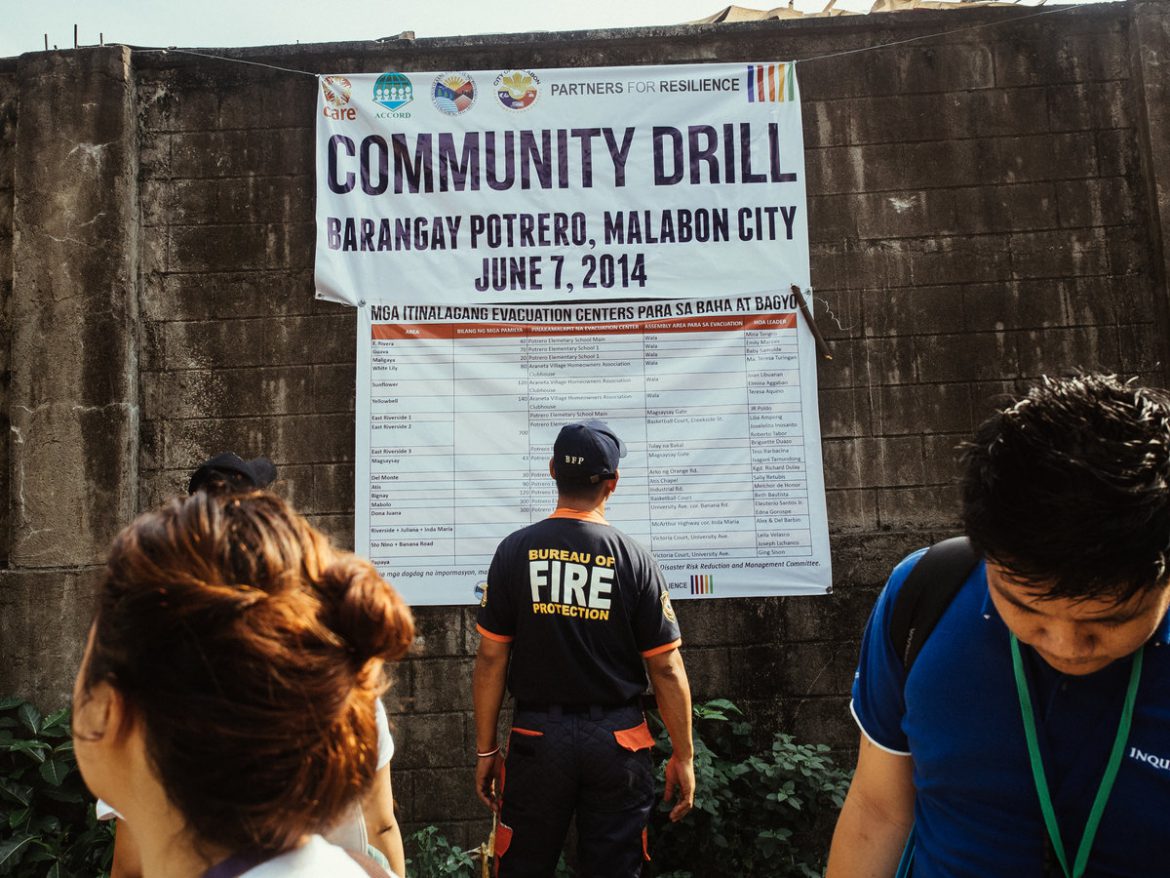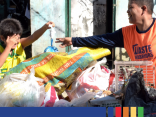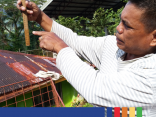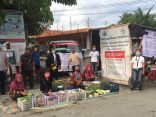(This report was first published online by Vera Files on 09 June 2014. Original versions are available here and here.)
By Jane Dasal, VERA Files
As soon as the siren rang, they ran.
Armed with “bakwit”or evacuee bags containing food, water and emergency supplies, residents of Barangay Potrero in Malabon City set out from their homes and lined up for barangay trucks to take them to evacuation centers as their shelter during typhoons.
(This report was first published online by Vera Files on 09 June 2014. Original versions are available here and here.)
By Jane Dasal, VERA Files
As soon as the siren rang, they ran.
Armed with “bakwit”or evacuee bags containing food, water and emergency supplies, residents of Barangay Potrero in Malabon City set out from their homes and lined up for barangay trucks to take them to evacuation centers as their shelter during typhoons.
With the rainy season looming ahead, the Barangay Disaster Risk Reduction and Management Office (BDRRMO) of Potrero, in partnership with the Assistance and Cooperation for Community Resilience and Development (Accord), on Saturday conducted the flood evacuation drill.
The barangay’s first drill was designed to test a revised contingency plan for an improved disaster mitigation program.
“We have conducted disaster risk reduction activities in the rural communities of Cordillera and St. Bernard in Leyte, but this is the first time we have worked in an urban setting,” said Accord executive director Marieta Alcid.
She said the large population of cities and the disruption the activities may bring to residents make organizing in urban setting more difficult.
Potrero is the largest barangay in Malabon: 54,000 residents or 9,000 households are spread out in 16 sitios. A total of 530 families or 1,590 people, mostly mothers and children, from East Riverside, Magsaysay, Yellow Bell, White Lily and Sunflower sitios participated in Saturday’s drill.
Potrero’s proximity to the Tullahan River’s shallow parts makes it flood-prone during the rainy season. Most of the families in the barangay are informal settlers living in cramped spaces. Worse, houses are easily washed away by water, along with solid waste, blocking water passage.
“We are training the community to immediately respond to our early warning signals. They should not have to wait for the flood level to rise before they evacuate,” Potrero barangay chairperson Sheryl Nolasco said.
Preparing for disaster
Residents from the five sitios most vulnerable in Potrero said they have experienced flood reaching up to 10 feet.
“The flood reached the second floor of our house during ‘Ondoy.’ We were not able to leave our homes because it was already risky for the barangay to fetch us. We stayed on our roof for a day,” Leonora Dela Pasion, 61, from East Riverside said.
More than 2,000 families needed to be evacuated during Ondoy and Habagat or the southwest monsoon, the barangay said.
“When Ondoy (struck in 2009) and Habagat in 2012, we were not prepared. Barangay officials just stayed in the evacuation centers and waited for the residents to come,” Nolasco said.
Now the process is more systematic.
Prior to the drill, community meetings and house-to-house visits were conducted to inform residents of the early warning signals and the drill process. Advisories were distributed to inform them of materials to put in the “bakwit” bags.
“We implemented policies such as requiring families to register as they arrive in evacuation centers and placing a limit of 10 families per room. Designation of rooms was done in a first come, first served basis,” Nolasco said.
During the drill, the siren giving the warning was placed on a fire truck that roamed the barangay. Each of three warnings corresponded to an action from residents.
The first siren signaled the residents to ready the basic necessities, such as food, water, light, phone, which they will need during emergency.
The second warning indicated that families should be alert and wait for announcements from the barangay for possible evacuation. Emergency supplies must also be already packed in backpacks or tote bags which will serve as the residents’ "bakwit" bags.
On the third warning,residents were to gather at designated points where they would be picked up by the rescue teams.
A total of 269 families from Magsaysay and East Riverside were taken to Potrero Elementary School Main, and 261 families from Yellowbell, White Lily and Sunflower to the Araneta Village Homeowners Association Clubhouse.
Lessons of the day
But participants and observers said in the post-drill assessment that there are some issues during the drill.
“The command post should also not be in the evacuation center so that the commander could focus on giving instructions to the ground,” said Susana M. Cruz, regional director of the Office of Civil Defense–National Capital Region.
“There are some who already the left their homes even though the signal for evacuation was not yet given. We could not hear the sirens so we had to rely on the information passed to us by neighbors,” Lilia Ampong, 57, said.
Nolasco said transportation should also be improved as only three L300 vans and three dump trucks picked up the evacuees.
In East Riverside 2, residents waited for 30 minutes after the third warning before they were picked up as the vehicles were still being used in other areas.
Kagawad Melchor Macabalitao also suggested a separate registration sheet for each street to avoid the congestion in the registration area.
“The design of the drill is preemptive evacuation. The need for evacuation prior to the flooding must be explained to the people so that the local government would not resort to forced evacuation (during actual typhoons),” Alcid said.
Some residents who attended the drill said they did not want to go to evacuation centers during the past typhoons.
“We had to secure our things from the water and from possible theft. The situation on evacuation centers were also cramped so it was better for to stay on the third floor of our house,” Jun Aldea, 47, said.
While the drill is a huge step for disaster risk reduction efforts in Potrero, Alcid said the disaster preparedness campaign must be sustained.
Local governments, she said, must focus on preparations and not only on emergency rescue, adding that residents must also be involved.
(Photo credit to Mario Ignacio IV)





